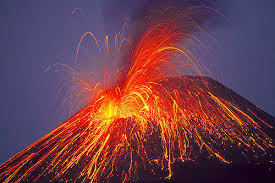Playing with fire: EGS wants to drill a multitude of holes across America by a process called ‘hydroshearing’

August 8, 2012 – OREGON - Here's a scary thought: scientists are testing the idea of pumping water into the sides of a dormant volcano in Oregon at pressures great enough to evoke small earthquakes. Why? Apparently, the boiling bowels beneath our feet hold tremendous promise for geothermal energy. According to a report MIT submitted to the Department of Energy, two percent of the heat some six miles below the ground could provide 2,500 times as much energy as the country currently uses. By employing a technique called Enhanced Geothermal Systems (EGS), several million gallons of water are blasted at high pressures through artificial wells over 10,000 feet deep. When the water reaches the hot rocks, it returns to the surface through a second well as scalding hot water, where its heat can then be harvested for power. Backed by the DOE, Google and others, AltaRock Energy and Davenport Newberry Holdings have been exploring ways to tap geothermal energy from the Pacific Northwest volcano, and will put their knowledge to the test this summer at Oregon's Newberry Volcano. “We know the heat is there,” Susan Petty, president of AltaRock, told the Huffington Post. “The big issue is can we circulate enough water through the system to make it economic.” Over the last century, engineers have been tapping the heat in the earth's crust for power by gathering hot water or steam bubbling near the surface to spin turbines that create electricity. Places with hot rocks lacking cracks or water to deliver the stream is the new frontier. That's where EGS comes into play. By drilling deep into the rocks where water is then pumped in, steam can be drawn out, a process known as hydroshearing. Though it sounds similar to hydrofracking, scientists claim that the technique used in this scenario is entirely different, which will not pollute groundwater with toxic chemicals. But what about triggering earthquakes? The effects of pumping the water deep into the ground will be measured using sensors that will provide microseismicity data to scientists to ensure that the water is getting the right exposure and not triggering seismic activity. Fracking, on the hand, pumps wastewater deep underground, which has likely led to recent earthquakes in Arkansas and Ohio. The team working on the project will be closely monitoring earthquake activity around sites like Newberry. Furthermore, a new international protocol came out earlier this year urging EGS developers to keep projects out of urban areas, while being upfront with local residents so they know what is going on. The prospect of a major quake at Newberry is very low, according to Ernie Majer, a seismologist at the Lawrence Berkeley National Laboratory. No significant faults exist in the area and it is far enough from population centers to make damages highly unlikely. The layers of volcanic ash built up over the millennia hinder any shaking. “That's the $64,000 question,” Majer said to the Huffington Post. “What's the biggest earthquake we can have from induced seismicity that the public can worry about.” –Energy Digital